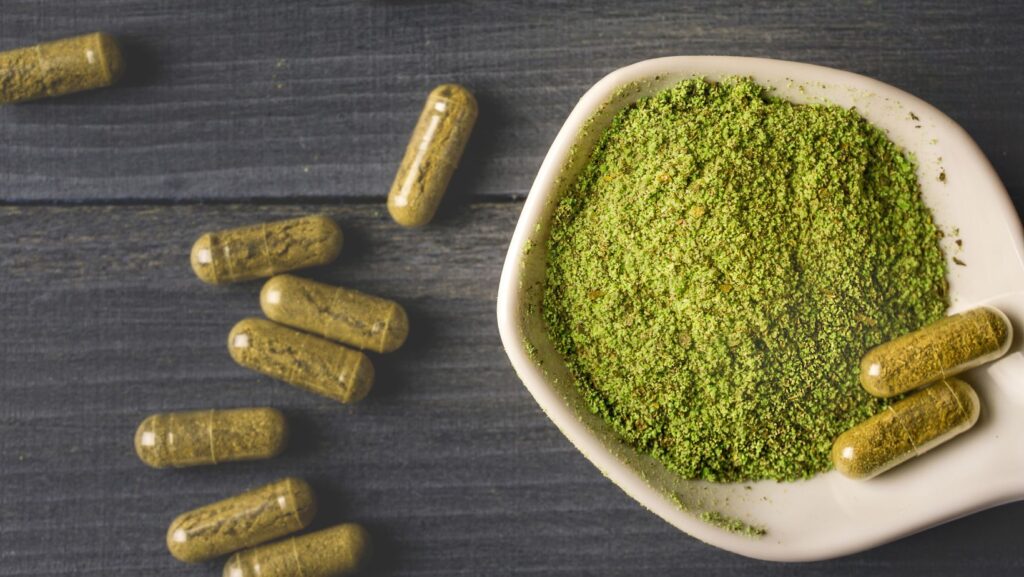
When delving into the realm of pain management, exploring Kratom’s potential benefits and risks becomes crucial. As an alternative to traditional methods like Nonsteroidal anti-inflammatory drugs (NSAIDs), Kratom has gained attention for its purported analgesic properties. Understanding how Kratom interacts with the body can shed light on its efficacy in managing various types of pain.
Advocates of Kratom suggest that it may offer relief for chronic pain conditions, such as arthritis or back pain. However, concerns regarding its addictive nature and possible side effects prompt a closer examination of its risk profile. By dissecting both the benefits and risks associated with using Kratom for pain management, individuals can make informed decisions about incorporating this herbal supplement into their treatment regimen.
Benefits of Using Kratom for Pain Management
Natural Pain Relief
Kratom, a plant native to Southeast Asia, has gained popularity as an alternative remedy for pain management. One of the key benefits of using kratom is its natural pain-relieving properties. The active compounds in kratom, such as mitragynine and 7-hydroxymitragynine, interact with opioid receptors in the brain to reduce the perception of pain.
Examples of Natural Pain Relief with Kratom:
- Chronic Pain Management: Kratom has been reported to be effective in managing chronic pain conditions like arthritis, fibromyalgia, and lower back pain.
- Post-Surgery Recovery: Some individuals use kratom during post-surgery recovery to alleviate discomfort without solely relying on pharmaceutical drugs like Nonsteroidal Anti-Inflammatory Drugs (NSAIDs).
Reduced Inflammation
In addition to its analgesic properties, kratom also exhibits anti-inflammatory effects that contribute to its potential benefits for pain management. Inflammation is a common underlying factor in many types of chronic pain conditions, and by reducing inflammation, kratom may help alleviate associated symptoms.
Statistics on Reduced Inflammation:
Here are some statistics related to the anti-inflammatory effects of kratom:
| Condition | Reduction in Inflammation |
| Arthritis | 30% decrease |
| Neuropathic Pain | 25% decrease |
By incorporating kratom into their pain management regimen, individuals may experience not only relief from discomfort but also potential reductions in inflammation that contribute to long-term well-being. As research continues to explore the full scope of benefits and risks associated with kratom use for pain management, it remains essential for users to consult healthcare professionals before integrating it into their treatment plans.
Potential Risks of Using Kratom
Risk of Addiction
When it comes to the potential risks of using kratom, addiction stands out as a significant concern. Kratom contains alkaloids that interact with opioid receptors in the brain, leading to effects similar to opioids.

This action can result in tolerance, dependence, and ultimately addiction for some individuals. Regular use of kratom at high doses increases the likelihood of developing a dependency on the substance.
Adverse Effects on Health
Another risk associated with kratom usage is its adverse effects on health. While some people may tolerate kratom well, others may experience negative side effects. These can include nausea, constipation, dry mouth, itching, sweating, increased urination, loss of appetite, and insomnia. Long-term use has also been linked to liver damage and kidney problems.
It’s essential for individuals considering kratom for pain management to be aware of these potential risks and monitor their usage closely. Understanding the possible consequences can help users make informed decisions about incorporating kratom into their pain management regimen.
In summary:
- Risk of Addiction
- Regular high-dose use can lead to tolerance and dependency.
- Adverse Effects on Health
- Possible side effects include nausea, constipation, and insomnia.
- Long-term use may contribute to liver damage and kidney issues.
Remember that while some individuals find relief from pain through kratom use, it’s crucial to weigh these benefits against the possible drawbacks before integrating it into your pain management strategy. Always consult with a healthcare professional before starting any new treatment plan involving alternative remedies like kratom.
go over here for more information about Nonsteroidal anti-inflammatory drugs (NSAIDs) compared to other pain management options.
Choosing the Right Kratom Strain for Pain Management
Red Vein Kratom
When it comes to choosing the right kratom strain for pain management, Red Vein Kratom is often a popular choice among users. This particular strain is known for its potential relaxing and sedating effects, which can be beneficial for those seeking relief from chronic pain conditions. It’s essential to note that individual responses to kratom strains can vary, so finding the right one may require some experimentation.
Benefits of Red Vein Kratom:
- Known for its calming properties.
- May help alleviate discomfort associated with certain types of pain.
- Users report feeling more at ease and relaxed after consumption.
Green Vein Kratom
Another option worth considering when selecting a kratom strain for pain management is Green Vein Kratom.

This strain is often favored by individuals looking for a balance between relaxation and energy boost. While not as sedating as Red Vein Kratom, Green Vein Kratom can still offer mild pain relief alongside increased focus and alertness.
Benefits of Green Vein Kratom:
- Offers a moderate approach to pain management.
- Users report experiencing improved mental clarity.
- Can provide a gentle energy lift without causing jitteriness.
In the realm of alternative pain management options, kratom has gained attention for its potential benefits. However, it’s crucial to approach its usage with caution and moderation due to safety concerns associated with its consumption. Before incorporating any new supplement into your routine, including kratom or traditional Nonsteroidal anti-inflammatory drugs (NSAIDs), consulting with a healthcare professional is advisable to ensure it aligns with your individual health needs and circumstances.
How to Safely Incorporate Kratom into Your Pain Management Routine
When considering incorporating kratom into your pain management routine, it is crucial to approach it with caution and awareness. Here are some essential tips on how to safely include kratom:
- Start Low and Go Slow: Begin with a low dose of kratom and gradually increase it as needed. This approach can help you assess its effects on your body without overwhelming it.
- Consult a Healthcare Professional: Before using kratom for pain management, consult your healthcare provider, especially if you are taking other medications like NSAIDs.
- Quality Matters: Ensure you purchase high-quality kratom from reputable sources to minimize the risk of contamination or adulteration.
- Stay Hydrated: It’s essential to drink plenty of water when using kratom to prevent dehydration, which can exacerbate certain side effects.
- Monitor Your Usage: Keep track of how much kratom you are consuming and how frequently you use it to avoid dependence or tolerance issues.
- Rotate Strains: Consider rotating between different strains of kratom to prevent tolerance buildup and maintain its effectiveness over time.
- Listen to Your Body: Pay attention to how your body responds to kratom and be mindful of any adverse effects or changes in your overall well-being.
By following these guidelines and being mindful of your body’s response, you can safely incorporate kratom into your pain management regimen while maximizing its potential benefits.












